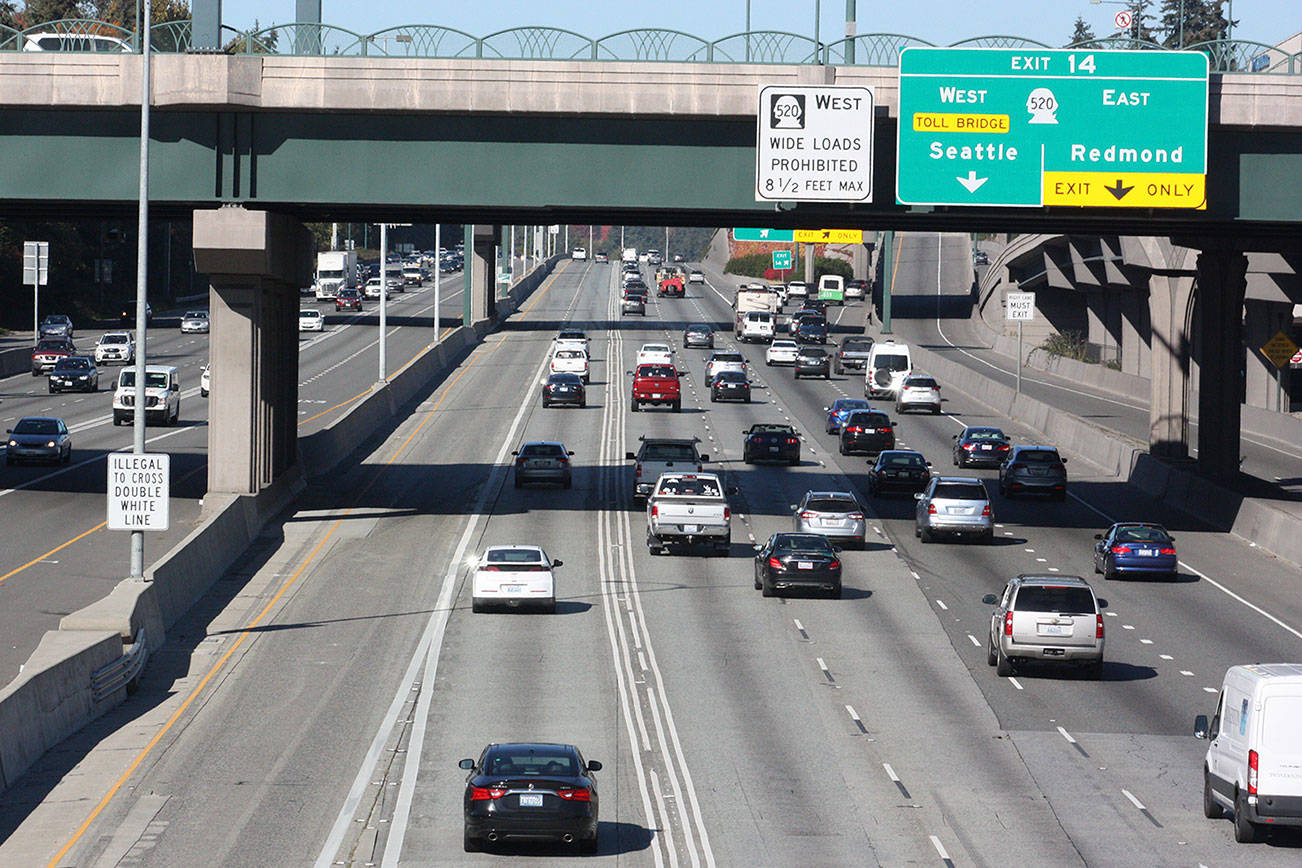Tolling revenue and a pay-by-mile tax pilot program were discussed at a meeting on Oct. 16 in Olympia, which showed that the state collected more revenue than anticipated from toll bridges and roads in Western Washington during the 2018 fiscal year.
The Washington State Traffic Commission gathered for a quarterly meeting with the state Department of Transportation (WSDOT) director of tolling Ed Barry. During the fiscal year of 2018, which runs from July to June, the state brought in $192 million in revenue, about $7.5 million more than was expected. Traffic on all toll roads increased and there were 53 million transactions on toll roads in 2018, 2 percent above forecast.
State Route 520 usage was up 4.8 percent over forecast and usage was higher than expected in May and June due to Interstate 90 closures and construction. The 520 toll bridge revenue brought in $3.2 million more than the previous year. The SR 520 bridge generated the most revenue for the state, about $83 million in 2018. That was followed closely by the Tacoma Narrows Bridge which also brought in more than $80 million.
On the Interstate 405 express lanes, total reported trips were .9 percent more the anticipated, and with more than 10 million trips reported, usage was higher in 2018 than 2017. Revenue was up by $2.6 million, more than 12 percent above what was expected. November 2017 saw the state collect more than $3 million in I-405 toll revenue alone, higher than any other month during the fiscal year.
WSDOT released a 30-month report on the performance of the I-405 toll lanes this August. In it, the agency said the toll lanes had raised nearly $59 million in revenue since they were opened in the fall of 2015 through the first quarter of 2018. Operations costs were $19.8 million and $11.5 million was used for making improvements to shoulders along I-405 to allow drivers to use them as lanes during rush hour. In total, $27.6 million was left to make improvements along I-405.
Jeff Doyle, with D’Artagnan Consulting, gave an update to the commission on the state’s road usage pilot charge program. The pilot is being used to test a pay-by-mile tax that could replace the state’s gas tax. Washington state currently charges 49.4 cents tax per gallon of gas. With cars becoming more fuel efficient and electric vehicles becoming more common, the state is looking at pay-by-mile charges to support transportation infrastructure.
The pilot program is using volunteer drivers to collect a mock 2.4 cents-per-mile tax for vehicles. Participants can record their mileage by reporting quarterly, tracking their distances through an app or a GPS mileage meter installed in their car, or by driving pre-selected distances.
Doyle said of the 2,105 total pilot program participants about 2,080 are actively reporting mileage. The pilot program began last January and lasts one year. Doyle said more than three-quarters of participants took part in a mid-program survey.
“Which is an extremely high number,” he said.
Data from the pilot program will be collected and analyzed before being sent to the state Legislature, which could eventually kill the gas tax in favor of a mileage tax. Washington state has the second-highest gas tax in the country, but even with high prices at the pump, gas tax revenues are expected to decline by 45 percent within the next two decades, the Everett Herald reported. Once the pilot program is finished, it will also be analyzed and presented to the state.


